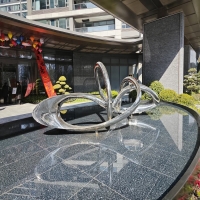Welcome to the website for landscape facilities products and knowledge.
How does the table’s surface texture impact the usability of electronic devices outdoors?
When using electronic devices outdoors, the surface texture of your table plays a crucial role in overall usability and performance. Many outdoor enthusiasts and remote workers overlook this factor, yet it significantly impacts device functionality and user experience.
Smooth, reflective surfaces like glass or polished metal can create substantial glare issues, making screen visibility challenging in bright sunlight. This glare forces users to increase screen brightness, consequently draining battery life faster. Additionally, these non-porous surfaces tend to trap heat, potentially causing devices to overheat during extended outdoor use.
Textured surfaces such as brushed metal, composite wood, or stone offer distinct advantages. Their matte finishes effectively reduce glare by scattering light rather than reflecting it directly. The microscopic irregularities in these surfaces help dissipate heat more efficiently, maintaining optimal device operating temperatures. Furthermore, textured materials provide better grip, preventing devices from sliding in windy conditions or when the table is accidentally bumped.
The importance of surface porosity cannot be overstated. Porous materials like concrete or unsealed wood allow for better air circulation around devices, aiding in natural cooling. However, extremely rough textures may cause vibration transfer to devices or create uneven surfaces that affect typing comfort and device stability.
For tablet users, textured surfaces provide essential friction that keeps devices securely positioned. Laptop users benefit from surfaces that allow adequate ventilation for cooling fans while preventing scratches to the device casing. The ideal outdoor table surface combines moderate texture with heat-resistant properties and sufficient friction coefficient.
Modern composite materials specifically designed for outdoor use address these concerns effectively. Many incorporate UV-resistant coatings and thermal management properties while maintaining an optimal balance between texture and functionality. When selecting outdoor furniture for electronic device use, consider surfaces with micro-textures that offer glare reduction without being overly abrasive.
Understanding these surface-texture relationships enables better choices for outdoor workspaces, ultimately enhancing device performance, extending battery life, and improving overall productivity in outdoor environments.
Related search:

Recommendation
Abstract art sculpture, stainless steel metal sculpture, large-scale water feature sculpture